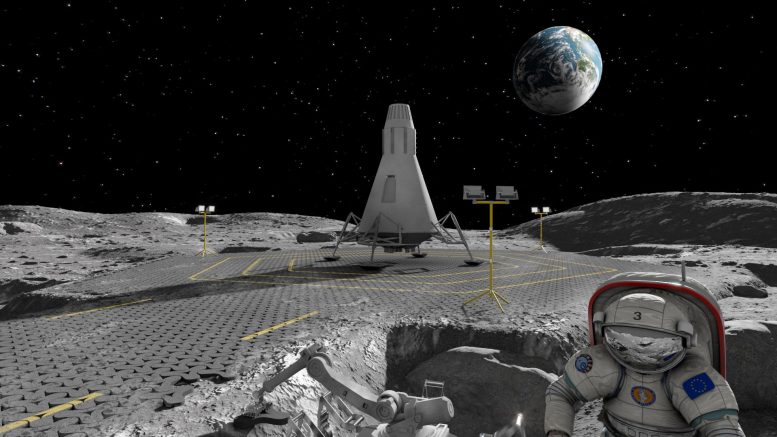
ESA’s PAVER project investigated the creation of paved surfaces on the Moon, such as roads and landing pads, through melting of lunar regolith. A carbon dioxide laser was used for terrestrial testing, but on the Moon a Fresnel lens would be employed to focus sunlight. Credit: PAVER consortium/LIQUIFER Systems Group
The European Space Agency (ESA) has successfully used a laser to melt simulated moondust, paving the way for potential road construction on the Moon, a crucial step to manage lunar dust challenges in future missions.
When astronauts return to the lunar surface they are probably going to be doing more driving than walking – but to keep billowing moondust at bay they are going to need roads. An ESA project reported on October 12 in the journal Scientific Reports tested the creation of roadworthy surfaces by melting simulated moondust with a powerful laser.
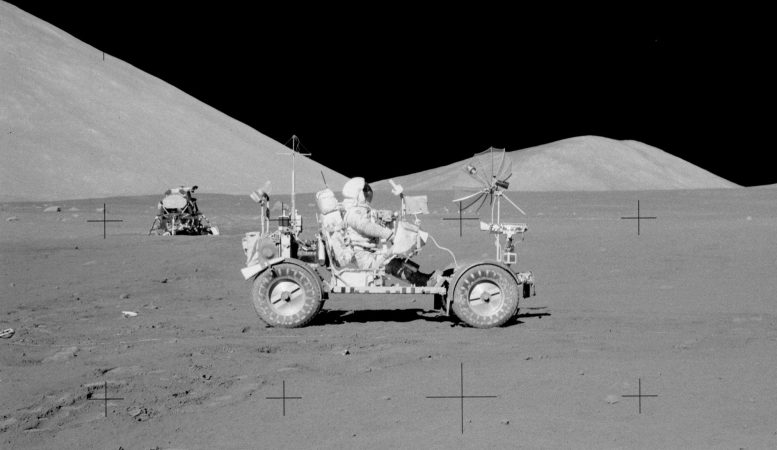
Astronaut Gene Cernan driving the lunar rover, with the Apollo 17 Lunar Module in the background. Credit: NASA
The Necessity of Lunar Roads
With civilization comes roads, and that is going to be especially true on the Moon, just to keep the dust away. Lunar dust is ultra-fine, abrasive, and clingy. In the Apollo era dust clogged equipment and eroded spacesuits.
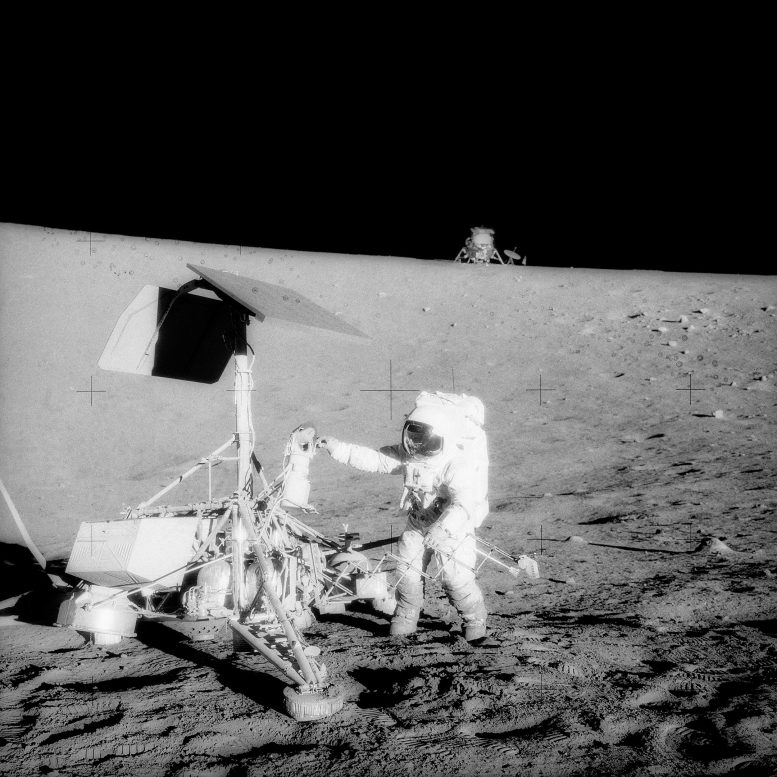
The Surveyor 3 spacecraft got a visit from Apollo 12 astronauts Charles Conrad Jr. and Alan L. Bean, who snapped this photo on November 20, 1969. Credit: NASA
Notably, when the Apollo 17 lunar rover lost its rear fender, the vehicle became so coated in driven-up dust that it threatened to overheat, until astronauts improvised a fix using recycled lunar maps. The Soviet Union’s Lunokod 2 rover did indeed perish through overheating when its radiator got covered in dust.
The Surveyor 3 lander was sandblasted with dust when the Apollo 12 Lunar Module landed around 180 m away. Current NASA modeling suggests that as lunar landers touch down, their thruster plumes could dislodge tonnes of dust, potentially adhering to lander surfaces as well as covering the entire vicinity of the landing.
Paving the Lunar Surface
The most practical response is to keep dust at bay by paving over areas of activity on the Moon, including roads and landing pads. The idea of melting sand to make roadways was first proposed for Earth, back in 1933.
ESA’s PAVER — Paving the road for large area sintering of regolith – project investigated the feasibility of this same approach for lunar roadmaking, led by Germany’s BAM Institute of Materials Research and Testing with Aalen University in Germany, LIQUIFER Systems Group in Austria and Germany’s Clausthal University of Technology, with support from the Institute of Materials Physics in Space of the German Aerospace Center, DLR.
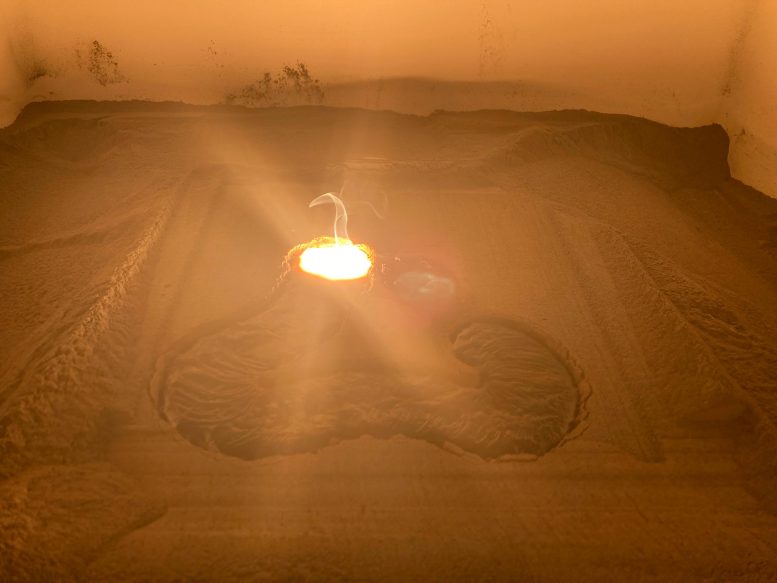
The PAVER consortium made use of a 12-kilowatt carbon dioxide laser to melt simulated moondust into a glassy solid surface, as a way of constructing paved surfaces on the face of the Moon. At facilities installed at Clausthal University of Technology, the consortium achieved a spot size of 5-10 cm. Proceeding through trial and error, they devised a strategy using a 4.5 cm diameter laser beam to produce triangular, hollow-centred geometric shapes approximately 20 cm across. These could be interlocked to create solid surfaces across large areas of lunar soil which could serve as roads or landing pads. Credit: PAVER Consortium
The PAVER consortium made use of a 12-kilowatt carbon dioxide laser to melt simulated moondust into a glassy solid surface, as a way of constructing paved surfaces on the face of the Moon.
As ESA materials engineer Advenit Makaya explains, the project is in fact returning to the original 1933 concept: “In practice, we would not bring a carbon dioxide laser on the Moon. Instead, this current laser is serving as a light source for our experiments, to take the place of lunar sunlight which could be concentrated using a Fresnel lens a couple of meters across to produce equivalent melting on the surface of the Moon.
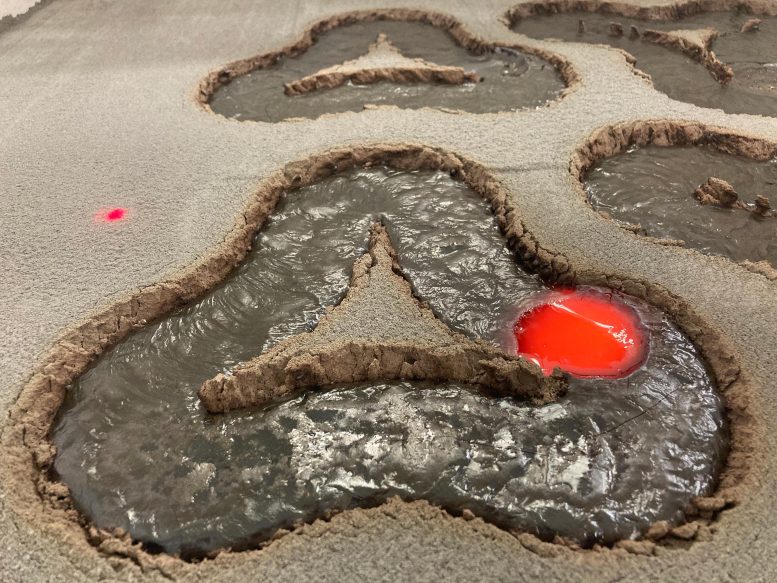
At facilities installed at Clausthal University of Technology, the PAVER Consortium achieved a melt spot size of 5-10 cm. Proceeding through trial and error, they devised a strategy using a 4.5 cm diameter laser beam to produce triangular, hollow-centred geometric shapes approximately 20 cm across. These could be interlocked to create solid surfaces across large areas of lunar soil which could serve as roads or landing pads. Credit: PAVER Consortium
Methodology and Outcomes
“During past in-situ resource utilization projects — including brick building using mirror-concentrated solar heat – we’ve been looking at surface melting limited to relatively small melt spots, from a few millimeters to a couple of centimeters in diameter. For building roads or landing pads a much wider focal point is required, to be able to scan a very wide area in a practical timescale.”
At facilities installed at Clausthal University of Technology, the consortium achieved a spot size of 5-10 cm.
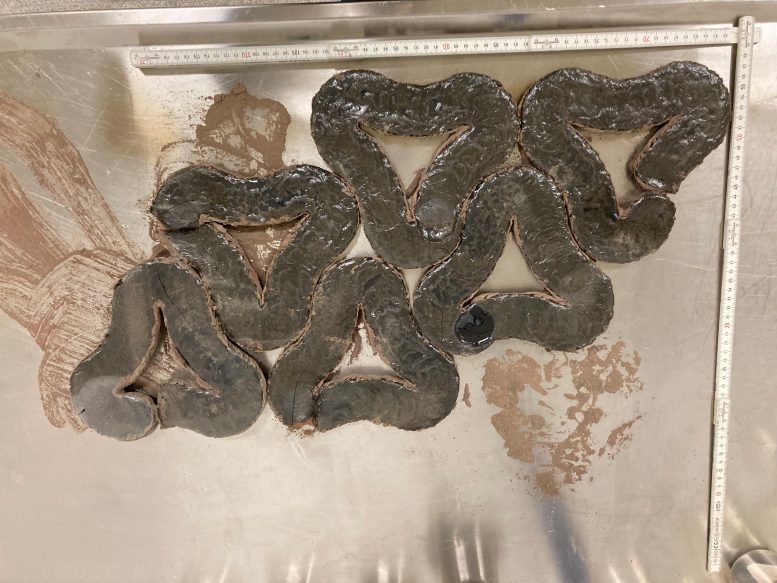
At facilities installed at Clausthal University of Technology, the PAVER Consortium achieved a spot size of 5-10 cm for melting simulated moondust. Proceeding through trial and error, they devised a strategy using a 4.5 cm diameter laser beam to produce triangular, hollow-centred geometric shapes approximately 20 cm across. These could be interlocked to create solid surfaces across large areas of lunar soil which could serve as roads or landing pads. Credit: PAVER Consortium
Proceeding through trial and error, they devised a strategy using a 4.5 cm diameter laser beam to produce triangular, hollow-centred geometric shapes approximately 20 cm across. These could be interlocked to create solid surfaces across large areas of lunar soil which could serve as roads or landing pads.
Advenit adds: “It actually turned out to be easier to work with regolith with a larger spot size, because at millimeter scale heating produces molten balls that surface tension makes hard to aggregate together. The larger beam produces a stable layer of molten regolith that is easier to control.
“The resulting material is glasslike and brittle, but will mainly be subject to downward compression forces. Even if it breaks we can still go on using it, repairing it as necessary.”
The team found that reheating a cooled track can cause it to crack, so they moved to geometries involving minimal crossovers. A single melt layer is about 1.8 cm deep; built structures and roads might be composed of several layers, depending on the load forces required.
Jens Günster, heading the Multimaterial Manufacturing Processes Division at BAM, explains: “Such high depth of melting to produce massive structures can only be reached by large laser spots.”
The team estimates a 100 sq. m landing pad with a thickness of 2 cm of dense material might be constructed in 115 days.
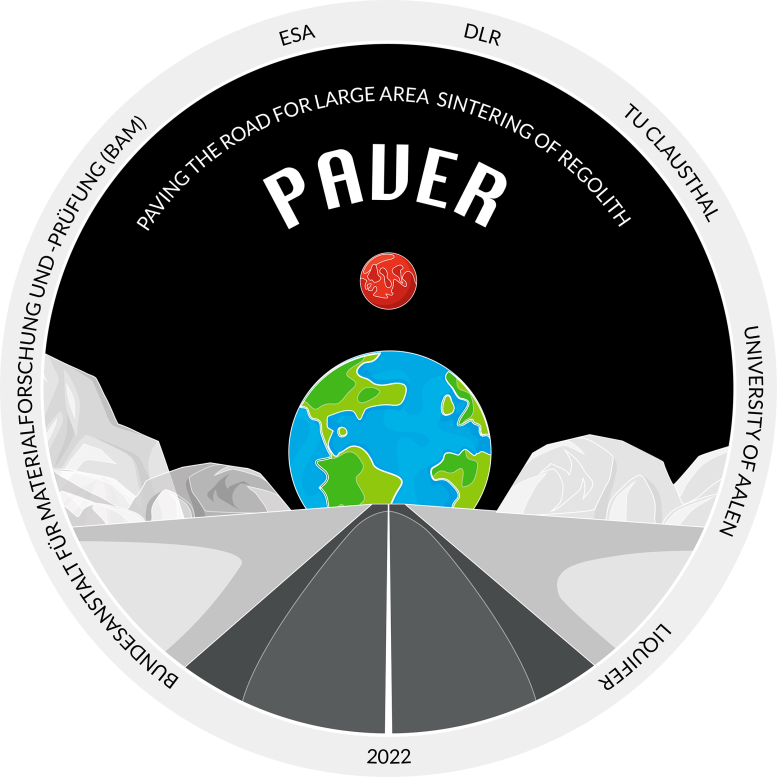
ESA’s PAVER — Paving the road for large area sintering of regolith – project investigated the feasibility of melting regolith for lunar roadmaking, led by Germany’s BAM Institute of Materials Research and Testing with Aalen University in Germany, LIQUIFER Systems Group in Austria and Germany’s Clausthal University of Technology, with support from the Institute of Materials Physics in Space of the German Aerospace Center, DLR. Credit: PAVER Consortium
Origin and Future Prospects
This project originated from a call for ideas run by the Discovery element of ESA’s Basic Activities through the Open Space Innovation Platform (OSIP).
This sought out research ideas related to off-Earth manufacturing and construction.
The call was answered no less than 69 times. Of those, a total of 23 ideas have been implemented – based on an evaluation by a panel of ESA experts, who scored the ideas on their novelty.
“This initial call has been an effective investment from our point of view,” notes Advenit, “It has opened up multiple promising tracks for follow-up investigation.”
Reference: “Laser melting manufacturing of large elements of lunar regolith simulant for paving on the Moon” by Juan-Carlos Ginés-Palomares, Miranda Fateri, Eckehard Kalhöfer, Tim Schubert, Lena Meyer, Nico Kolsch, Monika Brandić Lipińska, Robert Davenport, Barbara Imhof, René Waclavicek, Matthias Sperl, Advenit Makaya and Jens Günster, 12 October 2023, Scientific Reports.
DOI: 10.1038/s41598-023-42008-1

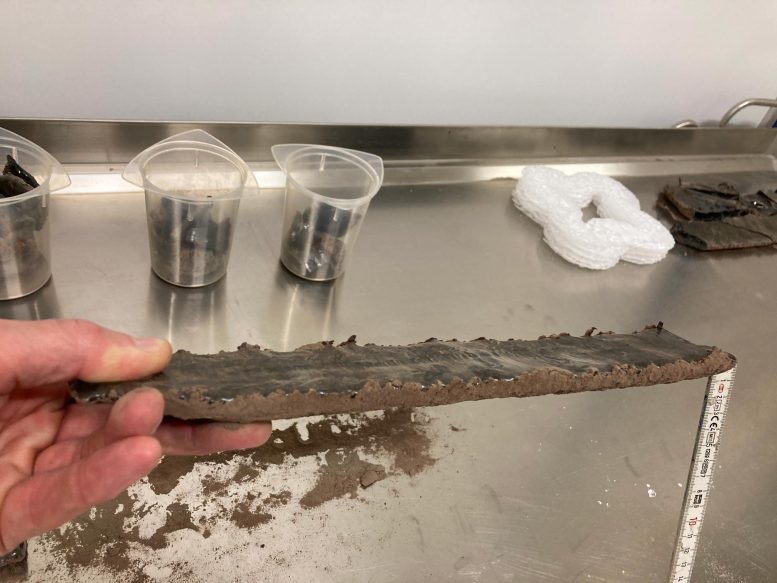







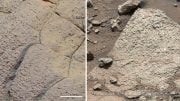
Be the first to comment on "Lunar Highways: How Lasers Can Transform Moon Dust Into Roads"